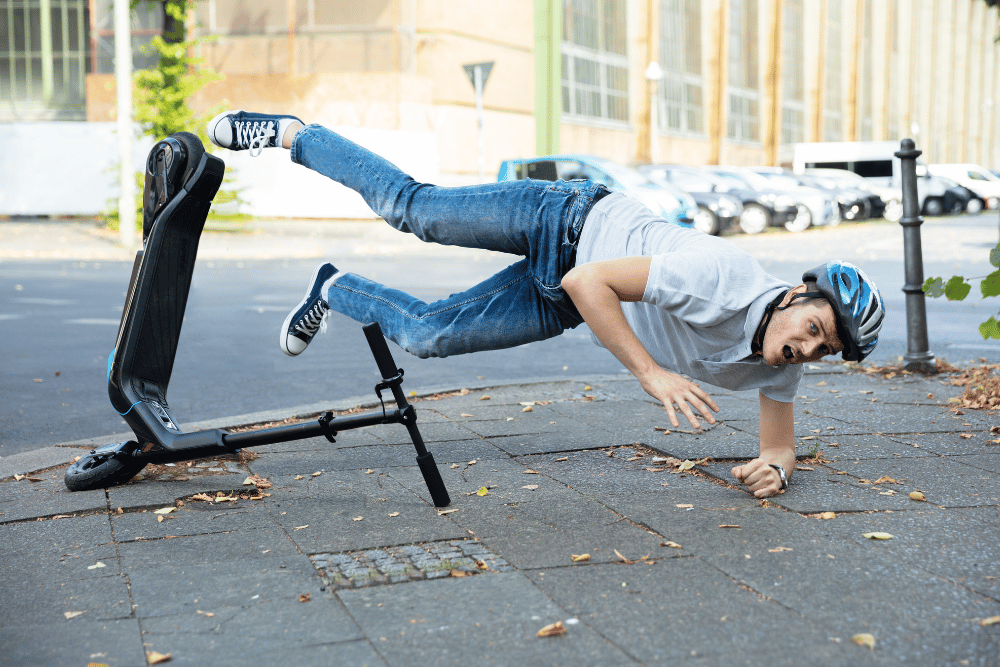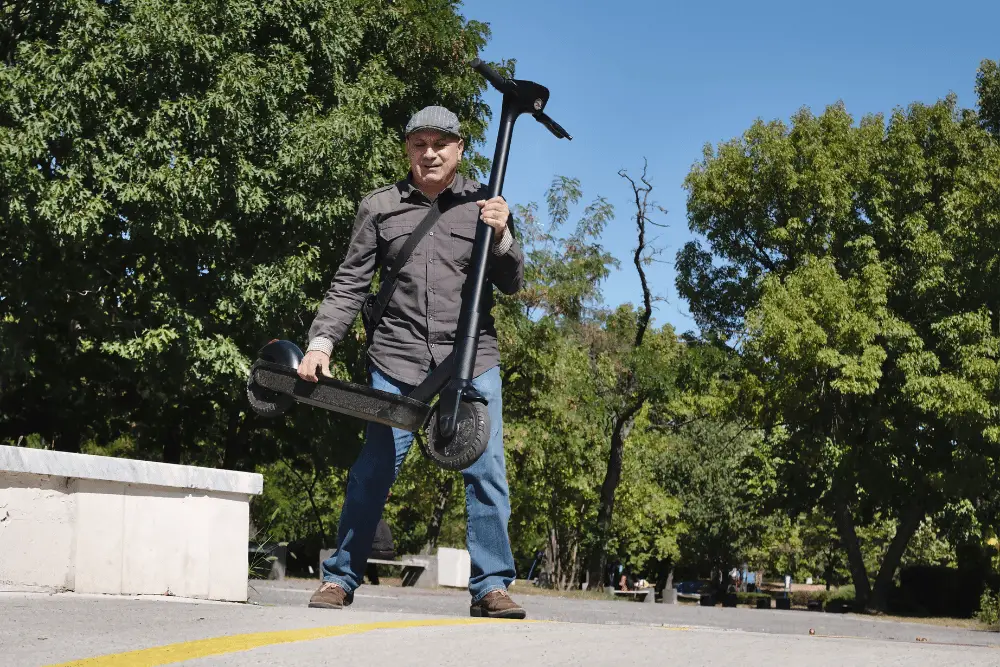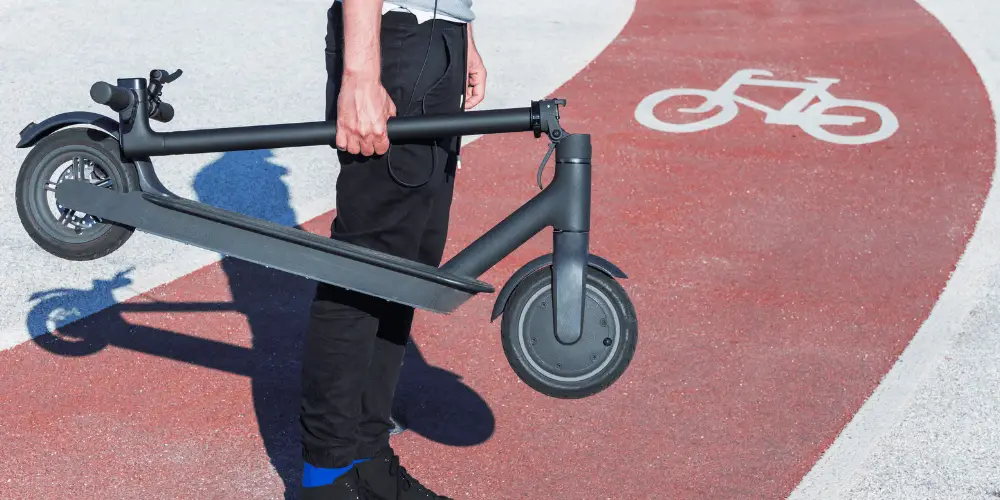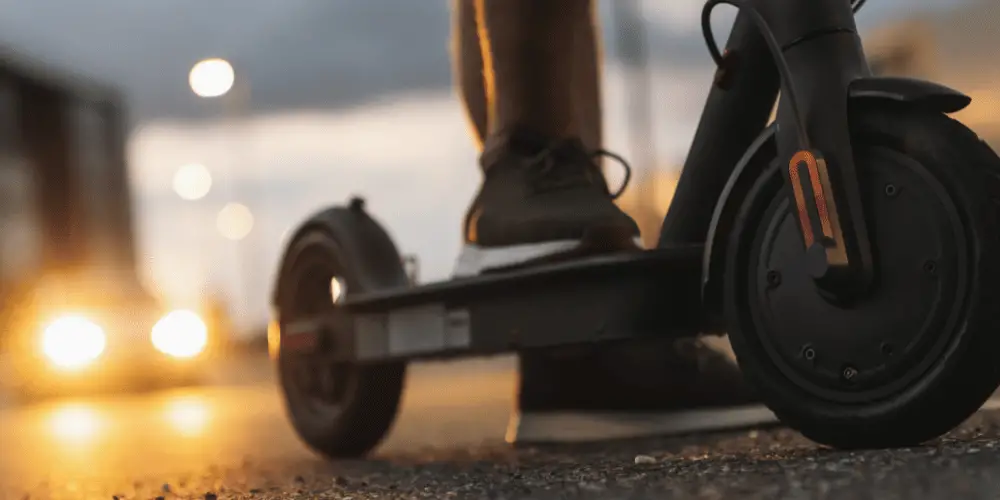Navigating through the city on an electric scooter brings a unique sense of freedom and agility, but the unpredictable weather can sometimes throw a spanner in the works, especially when rain clouds decide to open up. In this article, we delve into the essentials of keeping your scooter and yourself dry, ensuring that a sudden downpour doesn’t put a damper on your journey. From understanding the potential threats that rain poses to your electric scooter, to a curated selection of top rain covers and waterproofing tips, we’ve got you covered. So, whether you’re a seasoned scooter enthusiast or a commuting newbie, read on to discover how to safeguard your ride against the elements and maintain your momentum, come rain or shine.
Key Takeaways:
- Importance of protecting your electric scooter from rain.
- Tips for waterproofing your scooter.
- Dangers of riding in wet conditions.
- Understanding the IP rating of your scooter.
Understanding the Threat of Rain to Electric Scooters
While most contemporary scooters have robust outer casings that protect them from the elements, this is not always the case. The sensitive electrical components of an e-scooter can be damaged if they are exposed to any type of moisture on a regular basis, and that includes rain.
Moisture can cause corrosion, which reduces your scooter’s lifespan. However, knowing how to properly maintain your e-scooter can help you significantly extend its life. Some scooters have pretty high IP ratings, which means they can handle some rain, but it’s still a good idea to waterproof them even more if you can.
How to Waterproof Your Scooter
To protect your electric scooter from the rain, you should make sure it’s been appropriately waterproofed. Depending on the type of scooter you have, there may be some tips that are particularly relevant, but there are also generic ideas that apply to virtually any scooter.
Here are 6 suggestions for making your e-scooter more water-resistant:
- Seal up the cracks and holes in your deck, and keep duct tape handy in case you need it while you’re on the road.
- Screws and holes containing wires or cables should be o-ringed to prevent water from getting into them.
- Use silicone or superglue to patch up any holes.
- Clear adhesive tape or plastic covers can protect the screen, the controls, and other electrical components from damage.
- Expand the mudguards.
- Waterproof the connections and solders using a silicone-based conformal coating.
| Waterproofing Tips | Details |
| Seal Cracks | Use duct tape or silicone |
| O-ring screws | Prevents water entry |
| Patch holes | Use superglue or silicone |
| Use adhesive tape | Protects screens and controls |
| Expand mudguards | Prevents water splashes |
| Use conformal coating | Waterproofs connections |
The Dangers of Riding a Scooter in the Rain
Manufacturers encourage riders not to use their electric scooters in the rain if they have alternative means of getting around. This is because you risk harming the electrical system and the battery, especially when driving along flooded highways or through deep puddles. Water-resistant is not synonymous with waterproof. If you need to ride your scooter in the rain, avoid flooded areas at all costs.
While driving in the rain is not prohibited outright, it should be done sparingly. If there is only a bit of rain, put on a raincoat and you should be able to complete your journey safely. If it’s raining more heavily, pay careful attention to the amount of water on the road, and be aware of how far ahead you can see.
How to Prepare for the Rain Ahead of Time
Sometimes riding in the rain can’t be avoided. Be prepared by taking the following steps:
- Shop for a high-quality electric scooter. An inexpensive scooter left outside in the rain can quickly rust.
- Fenders are essential for rain rides. Invest if you don’t have them.
- Wear a visible raincoat. Avoid dark colours.
- Waterproof your scooter and cover electrical components.
- Lower tire pressure for better traction on wet surfaces.
- Use dielectric grease to protect electrical connections.
How to Be Safe While Riding in the Rain
Riding in the rain requires extra caution:
- Avoid large puddles.
- Ride slowly and avoid sudden turns.
- Avoid freezing rain.
- Be cautious of slippery surfaces like crosswalks and metal covers.
- Clean up after riding to prevent rust and damage.
Understanding Your Electric Scooter’s IP Rating
The IP rating is crucial for determining how water-resistant your scooter is. Look in the owner’s manual or search online for your model’s specs. IP ratings have two digits: the first represents protection against solids, and the second against liquids. The higher the number, the better the protection. However, always follow the manufacturer’s recommendations regarding riding in wet conditions.
Waterproofing: Beyond the Basics
While the basic waterproofing tips are essential, there are advanced methods to ensure your electric scooter remains dry and functional, even in the most challenging weather conditions.
DIY Solutions for Enhanced Waterproofing
- Duct Tape Magic: Duct tape can be a quick fix for sealing gaps in the deck, especially for scooters like Speedway 4 and Dualtron Thunder, where exposed wires are vulnerable. Remember to revisit this solution every few months and avoid covering exhaust holes.
- O-Rings for Protection: Some holes containing wires or cables can be a weak point for water entry. Using o-rings around these non-sealed screws and holes can prevent this.
- Silicone Sealing: Many scooters have small, non-functional holes. After identifying which holes can be sealed, use silicone to fill them up. This method is especially useful for holes in the deck, stem, or around the handlebars.
| Method | Application | Benefits |
| Duct Tape | Sealing gaps | Quick and removable |
| O-Rings | Around wires | Prevents water entry |
| Silicone | Fill holes | Permanent sealing |
Mudguard Extension
Some electric scooters come with shorter mudguards. In wet conditions, this can result in mud and water splashing onto the rider. A simple solution is to extend the mudguard using materials like duct tape or plastic. This DIY method can save your clothes from getting dirty during rainy rides.
Waterproofing Connectors
To enhance the water resistance of connectors and solders, use a silicone-based conformal coating. This step requires opening up your scooter, so ensure you’re comfortable with the process or seek professional help.
Understanding and Improving Your Scooter’s IP Rating
Your electric scooter’s IP rating is a clear indicator of its water resistance level. The IP rating is presented as “IP [first digit] [second digit]”. The second digit indicates water resistance, with a higher number signifying better protection.
| IP Rating | Description |
| IPX4 / IP54 | Resistant to water spray from any direction |
| IPX5 / IP65 | Resistant to low-pressure water jet spray |
| IPX6 / IP66 | Resistant to high-pressure water jets |
| IPX7 / IP67 | Protected from immersion in water up to 1m for 1 minute |
FAQs
Q1. What does the IP rating on my electric scooter mean?
The IP rating indicates the level of protection your scooter has against solids (first digit) and liquids (second digit). A higher second digit means better water resistance.
Q2. How can I improve my scooter’s water resistance?
Beyond the manufacturer’s design, you can use methods like duct taping gaps, using o-rings, and applying silicone sealant to enhance waterproofing.
Q3. Is it safe to ride my electric scooter in heavy rain?
While some scooters are designed to handle wet conditions, it’s always best to avoid heavy rain. If you must ride, take precautions like wearing visible clothing and avoiding large puddles.
Q4. How do I dry my scooter after getting wet?
Wipe off any water with a cloth and ensure it’s stored in a dry place. Avoid using hairdryers as they might push water into the electronics.
Brandon D
I'm an avid electric mobility advocate and the guiding force for a community of electric scooter enthusiasts. As an editor with a knack for detail and a passion for sustainable transport, I dedicate myself to providing in-depth reviews and expert insights into the latest in electric scooter technology.







